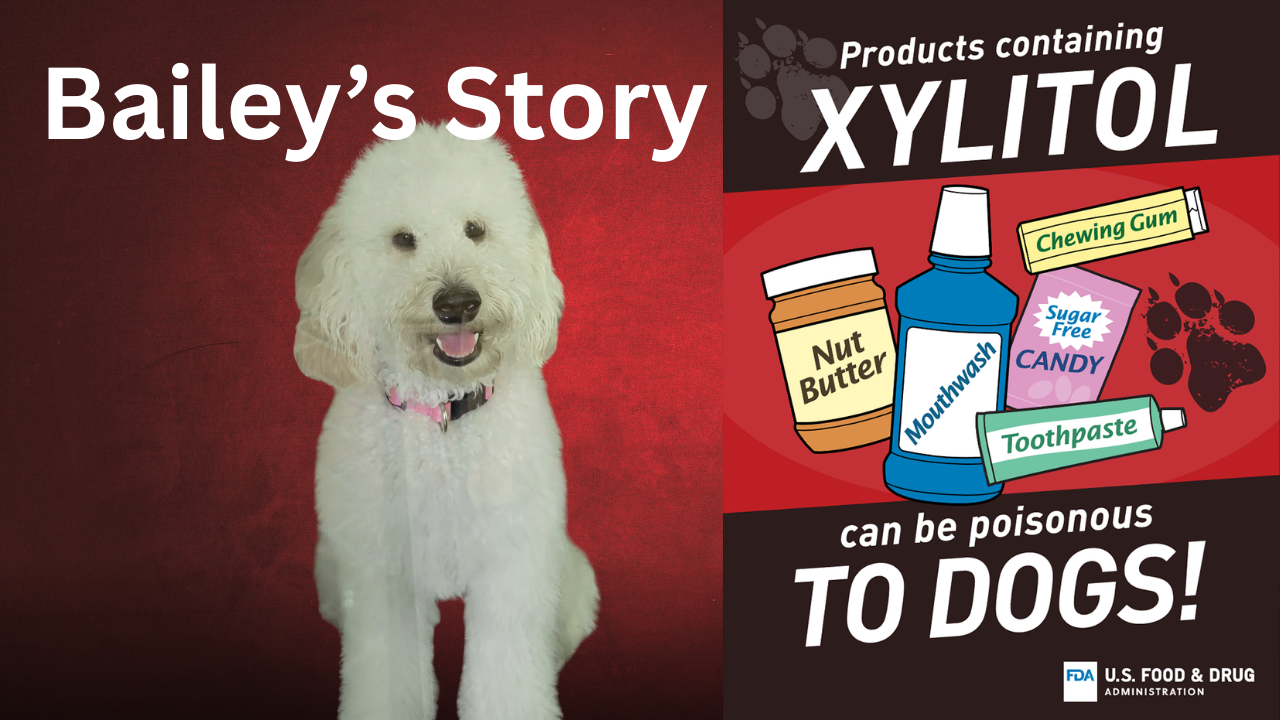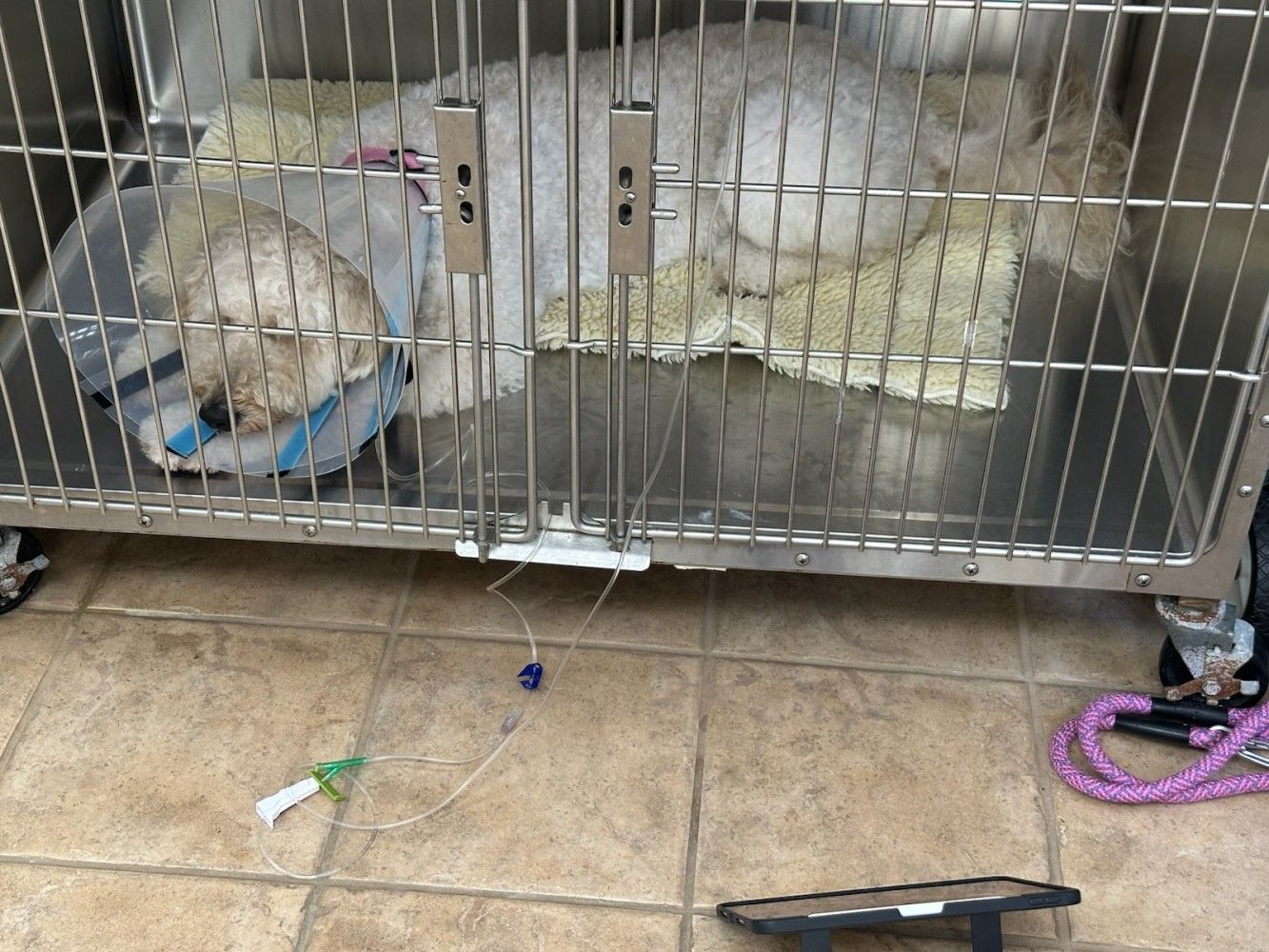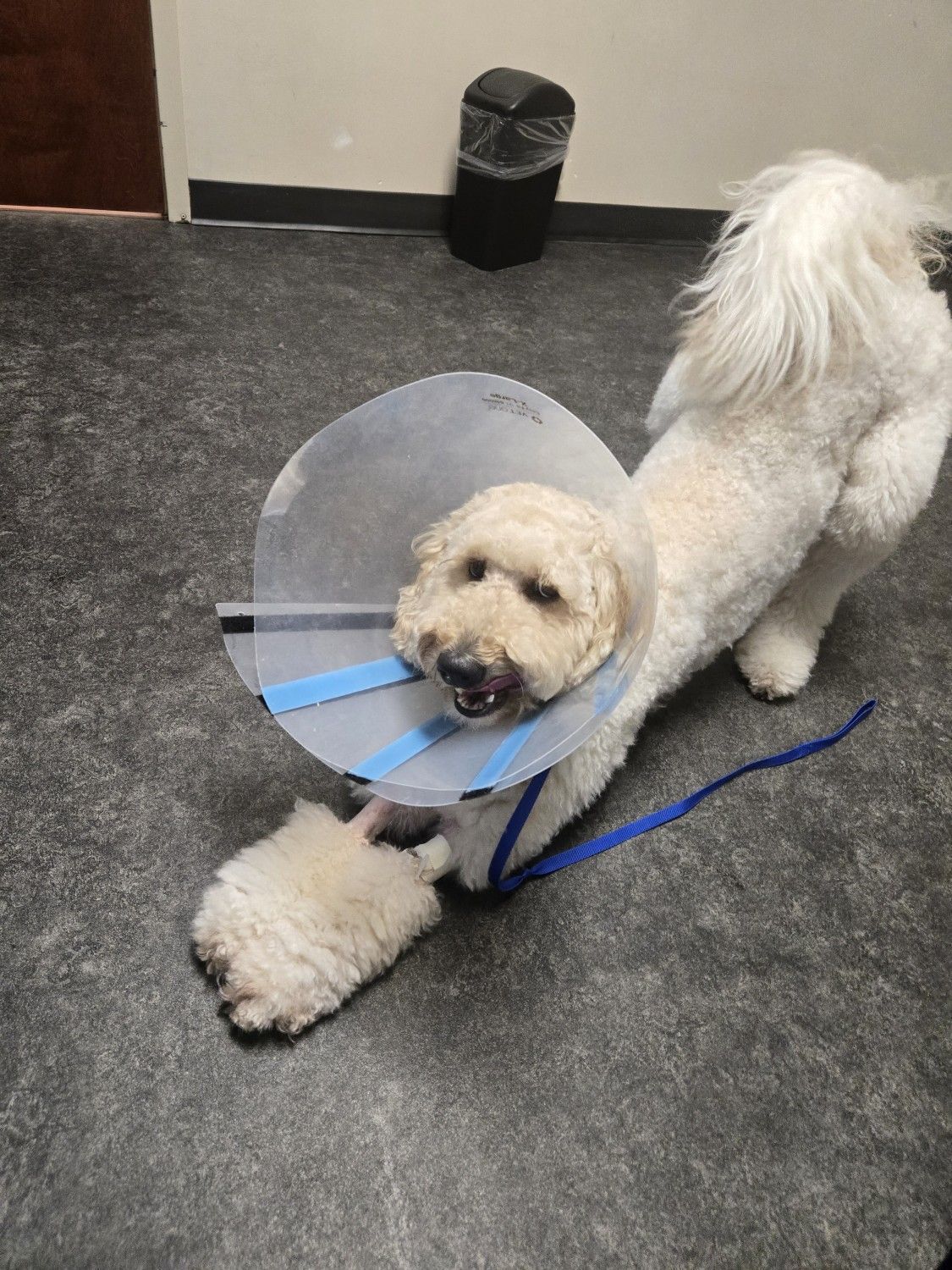The Hidden Danger of Xylitol: How a Sweetener Nearly Took Our Beloved Bailey

When Belinda walked through her door last week, she was met with a terrifying sight: red spots of vomit scattered across the floor and our 2-year-old dog Bailey trembling in distress. What seemed like an innocent act—Bailey chewing on a bottle of B12 vitamins—unleashed a life-threatening crisis. The culprit? Xylitol, a common sugar substitute hiding in everyday products. Bailey's story isn't unique, and it highlights a danger every pet owner must know.

What Is Xylitol and Why Is It Deadly for Pets?
Xylitol is a sugar alcohol used in sugar-free gum, candies, baked goods, peanut butter, toothpaste, vitamins, and even some medications. While safe for humans, it's extremely toxic to dogs (and potentially rabbits). When ingested, it triggers a massive insulin surge, causing:
- Hypoglycemia (low blood sugar) within 30–60 minutes, leading to weakness, tremors, seizures, or coma12.
- Liver failure at higher doses (over 500 mg/kg), which can be fatal within 24–48 hours13.
"Even small amounts of xylitol can cause hypoglycemia, seizures, liver failure, or death in dogs." —VCA Animal Hospitals1

Bailey's Close Call: A Wake-Up Call
Bailey’s curiosity led her to a bottle of B12 vitamins containing xylitol. Within minutes, she vomited and became lethargic. Belinda rushed her to the vet, where tests revealed plummeting blood sugar and rising liver enzymes. Emergency treatment included:
- IV dextrose to stabilize blood sugar.
- Liver-protectant medications (like N-acetylcysteine).
- 24-hour monitoring for liver damage12.
Thankfully, Bailey survived—but many pets aren’t as lucky. The ASPCA notes that 62.5% of dogs with liver injury from xylitol die despite treatment1.
Bailey is on a strict diet as of today 9/14/25 and the reason I decided to share this is for others who may not be aware as we were not until now. Our goal is to protect our pets as we protect our families, children and loved ones. We have experienced walking into the house after long days and finding that Bailey had eaten a whole loaf of bread, bags of avocado's and even an entire chicken plus bones. She is the happiest dog and so curious, so we have done everything to create safe spaces. But like all of us we get caught up in our busy days and rushing to get ready for work, take care of things and try to remember everything but we all slip at times.


Surprising Sources
Check labels for these common culprits123:
- Sugar-free gum and mints (especially "car cup" quantities).
- Peanut butter (many "sugar-free" brands contain xylitol).
- Vitamins and supplements (gummies, chewables, melatonin).
- Toothpaste, mouthwash, and nasal sprays.
- Baked goods and protein bars.
Tip: If a label says "sugar-free" or "birch sugar," assume it contains xylitol. Even some pet products (like toothpaste) may include it1.
Paws Off Xylitol; It's Dangerous for Dogs
This sugar substitute, found in some human foods and dental products, can be poisonous to your dog. WATCH VIDEO
Symptoms and Emergency Response
Act immediately if your pet shows:
- Vomiting, weakness, or loss of coordination.
- Tremors, seizures, or collapse12.
- Yellow gums (jaundice) indicating liver damage3.
What to Do:
- Call your vet or pet poison hotline (Pet Poison Helpline: 855-764-7661; ASPCA: 888-426-4435).
- Bring the product packaging to help calculate toxicity.
- Do NOT induce vomiting unless instructed—it can worsen symptoms12.
Prevention: Protect Your Pets
- Store products securely: Keep xylitol items in high cabinets.
- Use pet-safe toothpaste: Human toothpaste is a common risk.
- Educate family members: Ensure everyone knows the dangers.
- Check labels vigilantly: Even "natural" products can be toxic.
Spread Awareness, Save Lives
Bailey’s story is a stark reminder: everyday items can pose deadly risks to our furry family members. Share this information, check your pantry, and talk to your vet. Together, we can prevent tragedies.
"Xylitol’s prevalence is increasing—awareness is our best defense." —ASPCA1
For more resources:
Additional information from another article:
Sugarless gum may contain xylitol, a class of sweetener known as sugar alcohol. Xylitol is present in many products and foods for human use, but can have devastating effects on your pet.
If you think your dog may have eaten a product containing xylitol, call your vet, emergency clinic, or animal poison control center right away.
Over the past several years, the Center for Veterinary Medicine at the U.S. Food and Drug Administration has received several reports—many of which pertained to chewing gum—of dogs being poisoned by xylitol, according to Martine Hartogensis, a veterinarian at the FDA. The most recent report was related to "skinny" (sugar-free) ice cream.
And you may have heard or read news stories about dogs that have died or become very ill after eating products containing xylitol, which also may be known as birch sugar or wood sugar.
Other Foods Containing Xylitol
Gum isn’t the only product containing xylitol. Slightly lower in calories than sugar, this sugar substitute is also often used to sweeten sugar-free candy, such as mints and chocolate bars, as well as sugar-free chewing gum. Other products that may contain xylitol include:
- breath mints
- baked goods
- cough syrup
- children’s and adult chewable vitamins
- mouthwash
- toothpaste
- some peanut and nut butters
- over-the-counter medicines
- dietary supplements
- sugar-free desserts, including "skinny" ice cream
Xylitol can be used in baked goods, too, such as cakes, muffins, and pies — often because the baker is substituting another sweetener for sugar, as in products for people with diabetes. People can buy xylitol in bulk to bake sweet treats at home. In-store bakeries also are selling baked goods containing the sweetener. Some pediatric dentists also recommend xylitol-containing chewing gum for children, and these products could end up in a dog’s mouth by accident. It’s a good idea to keep all such products well out of your dog’s reach.
Why is Xylitol Dangerous to Dogs, but Not People?
In both people and dogs, the level of blood sugar is controlled by the release of insulin from the pancreas. In people, xylitol does not stimulate the release of insulin from the pancreas. However, it’s different in canines: When dogs eat something containing xylitol, the xylitol is more quickly absorbed into the bloodstream, and may result in a potent release of insulin from the pancreas.
This rapid release of insulin may result in a rapid and profound decrease in the level of blood sugar (hypoglycemia), an effect that can occur within 10 to 60 minutes of eating the xylitol. Untreated, this hypoglycemia can quickly be life-threatening, Hartogensis says.
A note to cat and ferret owners: xylitol does not seem to be as dangerous for cats and other pets. Cats appear to be spared, at least in part, by their disdain for sweets. Ferret owners, however, should be careful, as ferrets have been known to develop low blood sugar and seizures, like dogs, after eating products containing xylitol.
Symptoms to Look For in Your Dog
Help protect dogs by
displaying this flyer (PDF 1.3 MB) in animal shelters, pet stores and veterinary clinics in your neighborhood.
Symptoms of xylitol poisoning in dogs include vomiting, followed by symptoms associated with the sudden lowering of your dog’s blood sugar, such as decreased activity, weakness, staggering, incoordination, collapse and seizures.
If you think your dog has eaten xylitol, take him to your vet or an emergency animal hospital immediately, Hartogensis advises. Because hypoglycemia and other serious adverse effects may not occur in some cases for up to 12 to 24 hours, your dog may need to be hospitalized for medical monitoring.
What Can You Do to Avoid Xylitol Poisoning in Your Dog?
Hartogensis says, "Check the label for xylitol in the ingredients of products, especially ones that advertise as sugar-free or low sugar. If a product does contain xylitol, make sure your pet can't get to it." In addition:
Keep products that contain xylitol (including those you don’t think of as food, such as toothpaste) well out of your dog’s reach. Remember that some dogs are adept at counter surfing.
Only use pet toothpaste for pets, never human toothpaste.
If you give your dog nut butter as a treat or as a vehicle for pills, check the label first to make sure it doesn’t contain xylitol.
You Can Help the FDA by Reporting Safety Issues
The FDA wants to know if your pet encounters safety issues with a product, and/or unanticipated harmful effects that you believe are related to a product.
“Timely reporting of problems enables FDA to take prompt action,” Hartogensis says. Each report is evaluated to determine how serious the problem is and, if necessary, additional information may be requested from the person who filed the report.
You can report problems related to both human and pet foods and treats at the Safety
Reporting Portal.
Want to spread the word about xylitol? Here's a
poster you can print out to give to your veterinarian or pet shop owner, or perhaps your child's school.




